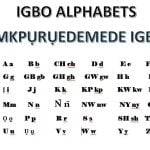Reviewed by Soliu.
Some of the weakest currencies in Africa include the Sierra Leonean leone, Guinean Franc (GNF), Malagasy Ariary (MGA), Ugandan Shilling (UGX), Ethiopian Birr (ETB), Zimbabwean Dollar (ZWL), the Sudanese Pound, etc.
African currencies often face various economic challenges, leading to fluctuations in their exchange rates and making some of them relatively weaker compared to major global currencies like the US Dollar or Euro.
The factors contributing to the weakness of these currencies can include high inflation, political instability, low foreign exchange reserves, and external debt.
Top 12 Weakest Currency in Africa
Here are the top 12 weakest currencies in Africa as of December 2023:
1. Sierra Leonean Leone (SLL):
Sierra Leonean Leone (SLL) is often considered one of the weakest currencies in Africa. The currency has faced significant challenges, including high inflation rates and economic instability, which have contributed to its devaluation over time.
Several factors have contributed to the weakness of Sierra Leonean Leone. One of the primary reasons is the country’s heavy reliance on imports, particularly for essential goods and services. This dependence puts pressure on the currency as it needs to be exchanged for foreign currencies to facilitate these imports.
In addition, Sierra Leone has faced political instability and periods of civil unrest, which have had adverse effects on its economy and currency. Political instability can erode investor confidence and lead to capital flight, further weakening the currency.
Sierra Leone’s economy heavily relies on the export of commodities such as diamonds, iron ore, and agricultural products. Fluctuations in global commodity prices can significantly impact the value of the Leone, making it vulnerable to external economic factors.
Sierra Leone faces economic challenges, including high inflation rates and as such, making it one of the weakest currencies in Africa.
Limited foreign exchange reserves and a reliance on imports contribute to currency weakness.
2. Guinean Franc (GNF)

The GNF is the official currency of Guinea, a country located in West Africa. The GNF has consistently been ranked as one of the weakest currencies in Africa, and its value has decreased significantly in recent years.
In 2019, the GNF was ranked as the 12th weakest currency in the world by the International Monetary Fund (IMF). The significant factors that have contributed to the GNF’s weakness include a lack of foreign investment, political instability, low levels of economic development, and high levels of corruption.
The GNF’s weakness has led to inflation and a decline in the purchasing power of the average Guinean citizen. According to the World Bank, the average inflation rate in Guinea was around 10% in recent years. High inflation has erodederoded the currency’s purchasing power and contributed to its weakness.
3. Malagasy Ariary (MGA)

The Malagasy Ariary is Madagascar’s official currency and has been experiencing a period of depreciation against major currencies like the US Dollar in 2023. The exchange rate saw the US Dollar trading at around 4,510.00 Ariary, with an all-time high of 4,521 Ariary in July 2023. This indicates a significant weakening of the Ariary over the year.
The Madagasy ariary is one of the weakest currency in Africa because it has long faced challenges with sluggish growth and persistent poverty, attributed to factors like weak governance, inadequate human and physical capital development, and slow structural transformation. These underlying issues are further compounded by climate crises and vulnerability to external shocks which affect the economy and, by extension, the currency’s value.
However, there are signs of economic recovery and growth. Madagascar’s growth rate is expected to rise to 4.6% in 2024, bolstered by a rebound in consumer spending and private investment. This anticipated growth, however, must be viewed in light of the high poverty rates in the country, which are expected to see only a gradual decline in the coming years.
4. Ugandan Shilling (UGX)

The Ugandan Shilling is the official currency of Uganda, and it has experienced fluctuations in its value, particularly in relation to the US Dollar. In 2023, the exchange rate hovered around 1 US Dollar, which is equivalent to approximately 3,720 Ugandan Shillings on average, with the highest rate reaching 3,801.92 UGX per USD and the lowest dropping to 3,603.41 UGX per USD.
The relative weakness of the Ugandan Shilling against major currencies like the US Dollar can be linked to various factors, which include the country’s economic conditions and external debt.
Despite these challenges, Uganda’s economy is on a growth trajectory, with projections indicating a 5.5% increase in the 2022/2023 Financial Year and an expected 6.5% growth in 2023. This growth is driven majorly by the services sector, which contributes to the GDP, along with the agricultural and manufacturing sectors.
However, Uganda’s economic progress is somewhat hindered by its debt situation. As of March 2023, the country’s debt-to-GDP ratio stood at 47.3%, with a significant portion of the government’s revenue being allocated to debt service. This financial burden has implications for the country’s currency value and overall economic stability.
5. Burundian Franc (BIF):

The Burundian Franc is Burundi’s official currency and has been experiencing fluctuations and a trend towards depreciation. As of late November 2023, the exchange rate saw the US Dollar trading at around 2,828.01 BIF, with an all-time high reaching 2,828.25 BIF in October of the same year.
The economic backdrop of Burundi provides insight into why it is on this list of weakest currency in Africa. The country’s economic activity remains fragile and is vulnerable to external shocks. However, there is a projection for growth in the GDP, estimated at 2.9% in 2023, an improvement from 1.8% in 2022. This growth is expected to be driven primarily by the agriculture and services sectors.
Another major aspect of Burundi’s economy is its reliance on mining, international economic and financial aid, and migrant remittances. These factors are expected to help narrow the current account deficit, which is projected to be 12.1% of GDP in 2023 and decrease to 6.3% in 2024.
However, public debt is a concern, projected to grow to 67.6% of GDP in 2023 before falling slightly to 65.5% in 2024 due to budget consolidation and exchange rate unification efforts. Burundi also faces challenges such as food insecurity, with approximately 1.2 million people estimated to be facing crisis levels of acute food insecurity between June and September 2023.
6. Congolese Franc (CDF)

The Congolese Franc is the official currency of the Democratic Republic of Congo (DRC) and has seen significant fluctuations and a trend of depreciation in recent years. As of November 2023, the exchange rate for the US Dollar against the Congolese Franc was around 2,476 CDF, with a historical high of 2,640 CDF reached in November 2023. This indicates an important factor that makes the Congolese Franc one of the weakest currencies in Africa over time.
Despite the currency’s weakness, the DRC’s economy has shown notable growth and resilience. The country’s real GDP growth was strong, reaching 8.9% in 2022 and is expected to be 6.8% in 2023. This growth has been primarily driven by the mining sector, which remains a key component of the DRC’s economy, although the growth rate in this sector is projected to slow down in 2023.
Economic growth in the DRC has also been supported by exports and investment despite global challenges such as the energy crisis. However, this growth has been accompanied by rising inflation, reaching 9.1% in 2022, driven by high food and imported energy prices.
In addition, the country’s budget deficit widened significantly, highlighting some of the economic pressures the DRC faces.
7. Ethiopian Birr (ETB)

The Ethiopian Birr is the official currency of Ethiopia and has seen significant fluctuations in its value against top currencies like the US Dollar in 2023. The exchange rate has varied, with the US Dollar being worth as much as 56.117 Ethiopian Birr and as little as 53.475 Birr at different points in the year. The average exchange rate hovered around 54.615 Birr per US Dollar.
This fluctuation in Birr’s value can be understood in the context of Ethiopia’s broader economic situation. Despite a projected growth rate of 7.5% in the 2022/23 fiscal year and an estimated GDP of $156.1 billion nominal, Ethiopia faces several economic challenges. The economy, primarily based on services and agriculture, has been striving to recover and reconstruct after a period of conflict. This has been a significant factor in Birr’s relative weakness against more stable global currencies.
Moreover, Ethiopia’s economic growth has not been evenly distributed among its population. Despite the high growth rates, Ethiopia remains one of the poorest in Africa, with a per capita gross national income of just $1,020. In addition, the country grapples with a high inflation rate of 26.8% and a public debt amounting to 53% of its GDP. These factors contribute to the volatility of the Ethiopian Birr, reflecting the complex interplay of economic growth, poverty, and financial challenges within the country.
8. Zimbabwean Dollar (ZWL)

The Zimbabwean dollar, also known as the Z$ or ZWD, is currently one of the weakest currencies in Africa. It has been plagued by hyperinflation and has experienced rapid devaluation in recent years. Many Zimbabweans now rely on the US dollar and the South African rand to transact business and meet their basic needs.
One of the main reasons the currency is struggling is the country’s history of hyperinflation. In 2008, the inflation rate in Zimbabwe reached an incredible 231 million percent, making the currency effectively worthless.
This hyperinflation was caused by a combination of factors, including economic mismanagement, government spending, and political instability. As a result, the country has experienced significant economic hardship, and many people have struggled to afford even basic necessities.
Despite the challenges, the country is working to stabilize its currency and rebuild its economy.
9. Malawi Kwacha (MWK)

The Malawi Kwacha is considered one of the weakest currencies in Africa, a status influenced by a complex interplay of economic factors. The Malawi Kwacha has an exchange rate of 1,088.15 Malawian Kwacha to 1 US Dollar. This ranking clearly indicates the currency’s weak position compared to stronger, more stable currencies.
Recent actions of the Reserve Bank of Malawi further highlight the weak standing of the Malawi Kwacha. In response to global currency volatility, the Bank adjusted the exchange rate of the Kwacha on November 9, 2023, from K1,180.29 to K1,700 against the US Dollar. This significant adjustment reflects Malawi Kwacha’s challenges in maintaining its value in the global market.
In 2023, the Reserve Bank of Malawi revised its inflation rate projection to an average of 29.5 percent for the year, a substantial increase from its previous projection of 24.5 percent and well above the 2022 average of 20.9 percent. This high inflation rate, driven by increases in both food and non-food item prices, has contributed to the depreciation of the Kwacha.
10. Sudanese Pound

The Sudanese Pound, the official currency of Sudan, is regarded as one of the weakest currencies in Africa, mainly due to the country’s complex economic and political challenges. As of 2023, the exchange rate of the Sudanese Pound against the US Dollar was 593 Sudanese Pounds per USD, a significant depreciation from its historical range. This decline in value reflects Sudan’s broader economic struggles over the years.
Sudan’s economy has been impacted by various factors, including political instabilities and external influences such as the spillover effects of the Russia vs Ukraine war. The country’s GDP grew by only 0.7% in 2022 after contracting by 1.9% in 2021. This modest growth was driven by the agriculture and mining sectors and supported by private consumption.
Inflation, a critical indicator of economic health, has been a major challenge for Sudan. In 2022, inflation eased from 359.1% in 2021 to 139% due to measures such as unifying the exchange rate and reducing the monetization of the fiscal deficit.
11. Sao Tome and Principe Dobra (STN):

The Sao Tome and Principe Dobra is the national currency of the Republic of Sao Tome and Principe and is considered one of the weakest currencies in Africa. In November 2023, the exchange rate saw the US Dollar trading at about 22.38 to 23.70 STD, indicating a significant depreciation of the Dobra.
Sao Tome and Principe is a small island state located 350 km off the west coast of Africa in the Gulf of Guinea. It has a fragile economy that is highly vulnerable to external shocks. The country’s structural challenges are typical of small, remote nations: its small size and low population limit the development of large-scale economic activities, leading to a small and undiversified productive base.
In addition, its remoteness increases trade costs and vulnerability to trade and climate shocks. Despite a GDP per capita of about $2,400, Sao Tome and Principe struggle with elevated poverty rates, income inequality, and limited employment opportunities. The business environment is further hampered by underdeveloped infrastructure and fragile institutions.
12. Malian Franc (XOF)

Mali, a West African nation, uses the West African CFA franc (XOF) as its currency, not the “Malian Franc.” The West African CFA franc is used in several West African countries and is pegged to the Euro. In 2023, the exchange rate for the US Dollar against the CFA franc was approximately 593.2 XOF per US Dollar.
The Malian economy experienced a real GDP growth of 3.7% in 2022, a slight increase from 3.1% in 2021. This growth was primarily driven by the primary and secondary sectors, particularly cereal production and industrial gold production.
However, the country also faced challenges, including a rise in inflation to 9.7% in 2022, up from 3.9% in 2021, and a widening budget deficit to 5.0% of GDP. Mali’s public debt decreased to 49.9% of GDP in 2022 from 52.0% in 2021, but the risk of overindebtedness remains moderate. The poverty rate in Mali rose to 45.4% in 2022, with a significant portion of the population in need of humanitarian aid, many schools closed, and people lacking health coverage.
In addition, Mali faces potential challenges, including possible sanctions by the Economic Community of West African States, security issues, and the impact of climate change.
Conclusion:
The weakness of these African currencies can be attributed to a combination of economic, political, and external factors. Governments in these countries often work to implement reforms, attract foreign investment, and stabilize their currencies to improve their economic prospects.
However, achieving currency stability and strength is a complex and ongoing process. Only time will tell how these currencies will fare in the future. What do you think about this weakest currency in Africa? Let me know in the comments box.
















